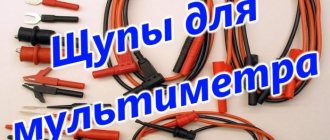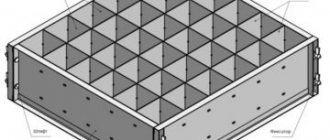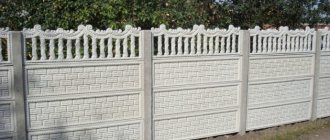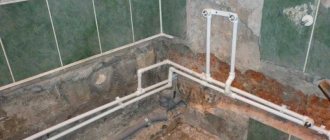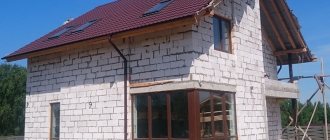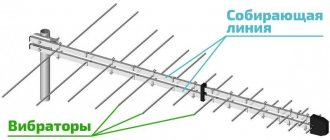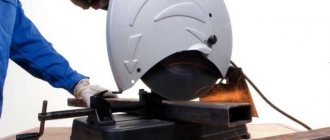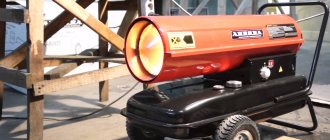Beton-House.com
Website about concrete: construction, characteristics, design. We combine the experience of professionals and private craftsmen in one place
Metal mold for making foam concrete blocks
Formwork in the production of cellular concrete is one of the most important things, so you need to treat its choice no less carefully than the main equipment. Factory-made or home-made foam concrete molds are a dilemma that sooner or later faces any owner or workshop foreman. What is more profitable, and in what case exactly, we will analyze in more detail.
Types of forms for foam concrete
Metal prefabricated formwork for foam concrete
Formwork for foam concrete is classified according to several criteria:
- According to the material from which it is made - wood, plywood, plastic, foam, metal;
- According to the parameters - for large and small wall blocks, for tongue-and-groove blocks;
- By design - completely collapsible or a solid base with mobile partitions. The first ones are very easy to store and transport, since all the elements when disassembled take up little space, while the second type is more reliable in operation.
Also, formwork for foam blocks can be characterized by its type of production, namely cast and cutting. In the first case, the equipment must have form-building partitions, when cast equipment simply requires a reliable frame.
Formwork for driving monolithic foam concrete and its subsequent cutting
If you have an organized production of cast foam concrete, then sometimes you practice cutting blocks, it is not necessary to purchase additional formwork for the monolith. If you do not install partitions, you can get an option for equipment for cutting technology.
In order for the blocks to be obtained with precise parameters, and the entire work process to be simplified as much as possible, it is necessary to select forms for the blocks that meet certain requirements.
Technology for self-production of cinder blocks
There are two ways in which slag blocks are made.
- The easy way. In this case, special containers are used, in which the prepared solution acquires the required strength. The blocks dry naturally until the cement is completely set.
- The hard way. With this manufacturing method, vibration devices are used. In many cases, they turn to elements such as a vibrating table or complement the form with a motor with a vibration function.
Let's get acquainted with the technology of making slag blocks using simple forms.
- All prepared ingredients in the required proportions are placed in a concrete mixer, after which they are thoroughly mixed.
- The prepared solution is poured into molds. As for tamping, it is carried out using a hammer - they tap the containers with it so that all the air is removed from the material.
- If the blocks are planned to be made with voids, then bottles of water are placed in each individual part (usually 2 bottles are enough).
The main difficulty with this manufacturing method is the compaction of blocks. If air bubbles remain inside the solution, this will have an adverse effect on the quality of the final product.
As for the more complex method of producing cinder blocks, the following work is carried out here:
- The manufacture of materials in this way should begin by stirring the mixture in a concrete mixer;
- the resulting solution is sent to the mold and then leveled with a trowel;
- then the vibrator is started, and the solution itself is kept in the mold for 20-60 seconds;
- then the equipment must be turned off, the installation is lifted, and then the finished unit is removed.
We invite you to familiarize yourself with Paint for heat preservation
Scheme for the production of one block with manual ramming
1. Concrete solution is prepared. To do this, it is better to use a concrete mixer.
2. Concrete mixture is poured into the prepared form. It is applied with a slide, which settles during the compaction process. When making in a conventional form, you can use the rule by which the mixture is smoothed flush with the walls.
3. The mold is closed with a lid.
4. If a vibrating machine is used, it is turned on for a few seconds, during which the mixture is compacted. If you use a regular mold, you can tap the sides with a hammer. This is necessary so that air bubbles come out of the concrete and all voids are compacted.
5. The compacted mass can be immediately removed from the mold, but it is recommended to keep it inside the mold for 24 hours.
Many people are interested in the question: how long does it take for the finished product to dry? Within a day, the blocks can be transferred to a permanent storage location. If a plasticizer was used during their manufacture, the solution hardens within 7–8 hours. During storage of the material, it should not be exposed to direct sunlight. It is best to store the blocks in a warehouse at a constant temperature and high humidity. After a month, you can build any structures from the blocks.
As you can see, making a cinder block with your own hands is quite simple. And its cost is such that it allows you to save twice on materials.
We figured out how to make a cinder block with your own hands. If you need to build a small outbuilding on your site, then there is no need to buy a ready-made cinder block. It's easier to make it yourself by buying cement and a slag machine. Moreover, you can make the equipment for this yourself.
Requirements for foam concrete formwork
Metal formwork for 84 blocks
It would seem that formwork is like formwork, what could be special about it and what could it correspond to? Sometimes defective foam concrete occurs precisely due to the fault of the form. Either the parameters of the block are inaccurate, or its volume is incomplete, or some products are “ugly”. So what should be the ideal formwork for foam concrete?
What are molds made of?
The finished foam concrete mixture exerts considerable pressure on the walls of the formwork, moreover, during the hydration process, and even if hardening occurs in a “steam room”, a large amount of heat and moisture is released. It is these three factors that “pass judgment” on any formwork.
Over time it warps. What affects the accuracy of products. And how quickly this will happen depends on what material the formwork is made of.
- Wooden rough boards are a pilot option at the beginning of the development of almost any professional or “garage” production. Quite quickly, such formwork fails, and the surface of the products leaves much to be desired. If you decide to use such forms, then before each assembly the wooden elements must be wrapped in cling film and be sure to be lubricated. This will slightly extend the service life and improve the appearance of the blocks.
Assembled laminated plywood formwork
- Instead of boards, production most often uses any other board materials, for example, plain and laminated plywood, OSB sheets. Of all the above, laminated plywood is the most suitable material for formwork, which can withstand any pressure from concrete.
- Plastic. Today on the market of equipment for foam concrete you can find modern formwork made of durable technical plastic with reinforcing elements made of metal. Most often these are forms for tongue-and-groove partition foam concrete blocks.
Formwork with form-building elements made of plastic
Manufacturers position this material as a representative of a new generation of polymers, characterized by the highest strength, resistance to critical temperatures and humid environments. Based on experience, we can say that such plastic elements are really good, but not durable. Internal partitions and parts with grooves and ridges warp, resulting in “wavy” blocks.
Of course, you can replace worn-out parts, but this is an additional cost, and quite a significant one. Alternatively, you can try to make similar elements with your own hands or with the hands of an experienced tinsmith. And the partitions are best cut from laminated plywood, the thickness of which ideally matches the thickness of the “native” walls.
Plastic molds
The photo above shows another type of plastic mold for making piece foam block products. They are not profitable for mass production. Rather, they will be a salvation for those who make small batches using home-made equipment. Over time, the plastic will warp. And you need to take the blocks out of them extremely carefully, since they are very fragile in the first 24 hours after hardening.
- Metal formwork is the most reliable option for mass production. Any element of increased precision can be made from sheet steel blanks. Today you can buy such forms without any problems. Even among used options you can find some good formwork.
Metal collapsible formwork
And it’s quite easy to make such equipment. If only there were suitable equipment and a reliable craftsman... Sheet steel grade St3 with a thickness of 2-4 mm is an excellent raw material base for concrete formwork.
It does not warp under pressure and relatively high temperatures (on average, during steaming at the very peak of hydration processes, the temperature inside a concrete block can rise to 95 degrees). If desired, similar formwork can be made according to the parameters of the trolley so that it can be transported around the workshop and to the steaming chamber.
- Styrofoam. Since we started talking about forms for foam concrete, it would be unfair to remain silent about permanent foam formwork, or as it is also called “Lego blocks”. It is applicable for monolithic construction from commercial foam concrete or any other lightweight mortar. Such forms are prefabricated hollow structures with a convenient and reliable fixation system among themselves.
Polystyrene foam as formwork
It is simply ridiculous to practice such formwork in mass production when it is quite popular in construction. However, recently they have been abandoning it, since the foam itself does not allow moisture to pass through, which creates a greenhouse indoors. This video shows the pouring of the mixture into plastic molds for foam concrete.
Parameter accuracy
The formwork for pouring any concrete products must be simply perfect, since concrete accepts any inaccuracies. As a result, such products are discarded or cut into smaller ones, which are sold as second or first grade. In any case, there are losses in money and labor costs to finalize the defect.
As for foam concrete, the thickness of the assembly seams should be negligible, since under pressure the foam concrete mass simply seeps through these cracks. And the larger they are, the greater the loss of solution. Therefore, if you buy used formwork, be careful. Perhaps large gaps between elements are one of the reasons for selling.
Assembled metal mold
The metal foam concrete formwork shown in the photo above has no bottom. In any case, foam concrete will be squeezed out in these places when pouring. To prevent this, you can simply sand the perimeter of the formwork so that the embankment fits very tightly to the form.
Simplicity
The fewer additional elements on the formwork, the longer it will last. If you make the molds yourself, then provide a reliable, but at the same time simplest assembly system. Let's look at a similar recommendation in the photo below.
- Pay attention to the fastenings of all three models of forms. The first photo shows a simple metal retainer, the second one shows the grooves, and the third one shows a bolted connection. Of the presented options, the first type of fastening is considered the most convenient and durable. If the metal retainer is lost or “loose,” you can always make a “double” to replace it.
- The formwork option shown in the second photo requires several people to maintain it, since one person will not be able to put the side boards in place. In addition, there is a risk that the formwork will not be installed level. And even in the assembled state, one push from the installation boot is enough for part of it to become warped. This is how curved blocks are obtained. This is because there is no bottom, which gives rigidity.
- The third photo shows the classic version of tongue-and-groove formwork with screw connections. But similar fasteners may also be present on ordinary metal forms. The only advantage is reliability, and even then the thread wears off over time. In addition, in order to fix the parts of the formwork well, you need to apply considerable force. If the solution gets on such a fixative, it will be quite difficult to unscrew it.
- Of the three types of formwork presented, the first is the most convenient and reliable. A more detailed photo of it is presented below.
Versatility
The finished formwork is intended for the production of foam blocks of GOST sizes.
The standard parameters of foam concrete products are as follows:
- wall – 600x300x200 mm;
- small – 200x200x200 mm;
- partition – 600x300x100 mm.
But in production practice, that just doesn’t happen. There are customers “with a twist” who are willing to pay any money for the serial production of non-standard blocks. And losing any client is not very pleasant.
Therefore, when you purchase or make molds yourself, it is best if they are universal, i.e. It will be possible to make blocks from them with the usual parameters, and if assembled differently, it becomes possible to fill products of other dimensions.
Storage
Not every formwork will be intensively used in production. There will come a time when you just need to disassemble it and put it in the far corner. Therefore, it is very important that when dismantling, the formwork takes up as little space as possible.
Having figured out what requirements a high-quality form for foam concrete must meet, you can try to make it yourself.
How to make a vibrating machine?
To ensure the best quality of the resulting products, special equipment is used for the production of cinder blocks at home. This is the so-called vibrating machine. It allows you to create vibration after pouring the solution into the mold, which helps to compact the solution and increase the strength of the product. Let's look at how to make a homemade vibrating machine yourself. Its scheme is quite simple.
Vibrating machine for the production of one block
By its design, the vibrating machine consists of the following elements:
- A metal box (shape) designed for the simultaneous production of 1–3 cinder blocks with your own hands. The box is made of metal sheets. Its dimensions correspond to the dimensions of future products.
- Cylinders for forming voids. For this purpose, pieces of metal pipes are used, which are processed with a grinding wheel to form a taper. The cylinders are connected to each other by a metal bridge along the long side of the mold and attached to the side walls. The distance from the bottom of the cylinders to the bottom should not be less than 3 cm.
- A slotted lid that fits over the cylinders.
- Handles on the sides for removing the mold from the blocks.
- Electric motor with a power of 0.5–0.8 kW. It is bolted to one of the walls of the mold.
Eyelets are welded on the back side of the mold for attaching the cylinders. If it is necessary to make solid blocks, the cylinders can be easily removed from the eyes. The finished equipment for making cinder blocks is cleaned and painted.
With the help of such a machine, a cinder block at home is very durable and has the correct geometry.
We invite you to familiarize yourself with the blind area of the house with your own hands, from which you can make a blind area around the house
After making the cinder block molds, you can begin the actual production process.
You can make slag blocks at home using a special vibrating machine, which you can also make yourself. The main component of such a device is the vibroform for the solution itself. Such a machine is a steel box in which parts with voids (or without them) are fixed. The matrix itself is already a machine. It is allowed to be used by performing some steps manually.
To make a vibrating machine yourself, you need to purchase:
- welding machine;
- grinder;
- vice;
- tools for carrying out metalwork.
As for materials, you will need:
- steel sheet 3 mm - 1 sq. m;
- pipes with a diameter of 75-90 mm - 1 m;
- 3 mm steel strip – 0.3 m;
- electric motor with a power of 500-750 W;
- nuts and bolts.
Let's consider the procedure for carrying out work on the manufacture of a homemade vibrating machine.
- Measure a standard slag block or record the specific parameters you need.
- Cut out the side parts of the machine from a sheet of metal. Based on the number of cinder blocks, provide the required number of partitions. As a result, a box is formed with 2 (or more) identical compartments.
- The bottom wall with a thickness of at least 30 mm must have voids. Based on this parameter, we determine the height of the cylinder limiting the voids.
- We cut 6 separate pieces of pipe with a length corresponding to the height of the cylinder.
- In order for the cylinders to acquire a cone-shaped structure, it is permissible to cut them lengthwise to the middle part, compress them using a vice, and then connect them by welding. In this case, the diameter of the elements will decrease by approximately 2-3 mm.
- The cylinders need to be welded on both sides.
- Next, these parts should be connected to each other in the form of one row, following the long side of the future cinder block. They must repeat the location of the voids on the factory element. At the edges it is necessary to attach a 30 mm plate with holes for fastening to the eyes.
- A cut should be made in the center of each matrix compartment and an eye should be welded. This is necessary to ensure the installation of temporary fasteners for void limiters.
- On the outer transverse wall, 4 bolts are welded under the motor mounting holes.
- Next, the apron and blades are welded along the edges in the places where loading is carried out.
- After this, you can proceed to preparing all elements for painting.
- You can make a press that follows the shape of the mechanism using a plate with holes whose diameter is 3-5 mm larger than the cylinders themselves. The plate should easily fit to a depth of 50-70 mm into the box where the restrictive parts are located.
- Handles need to be welded to the press.
- Now you can paint the equipment and fix the vibration motor.
